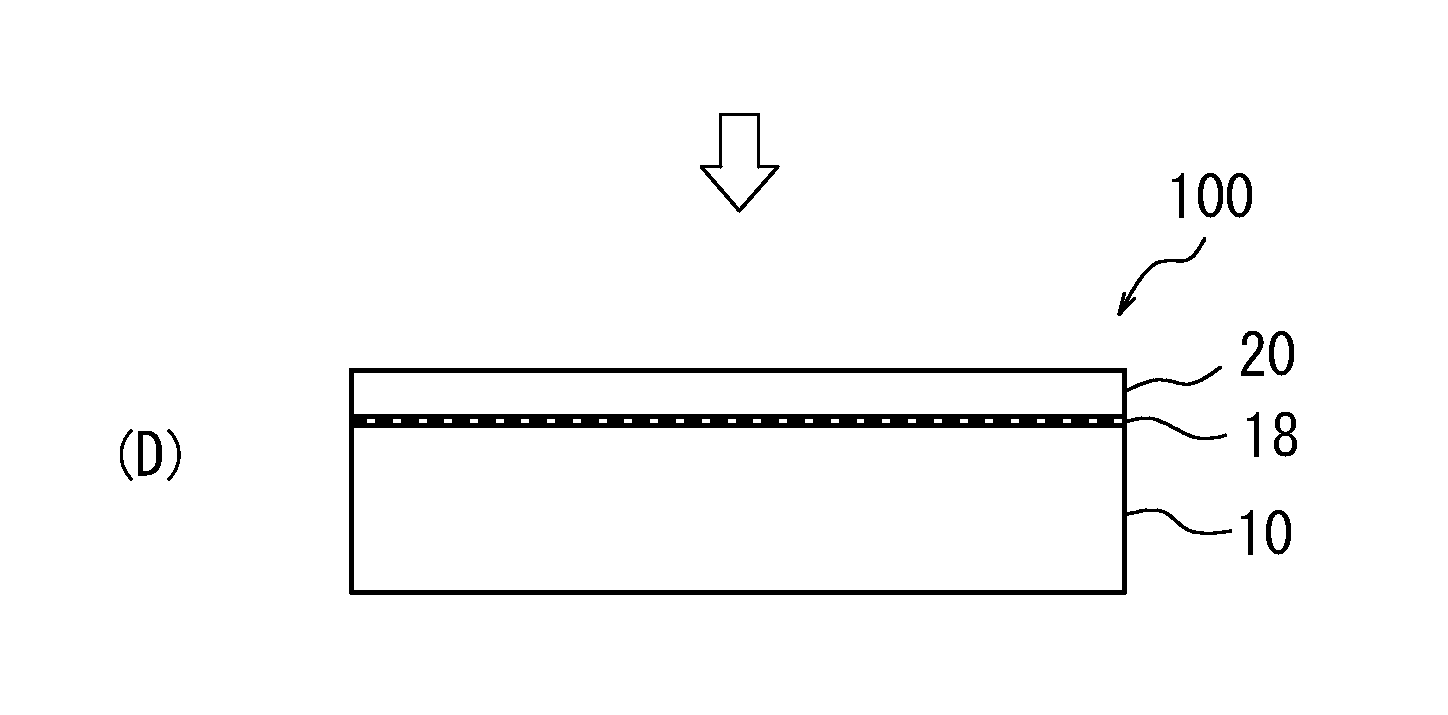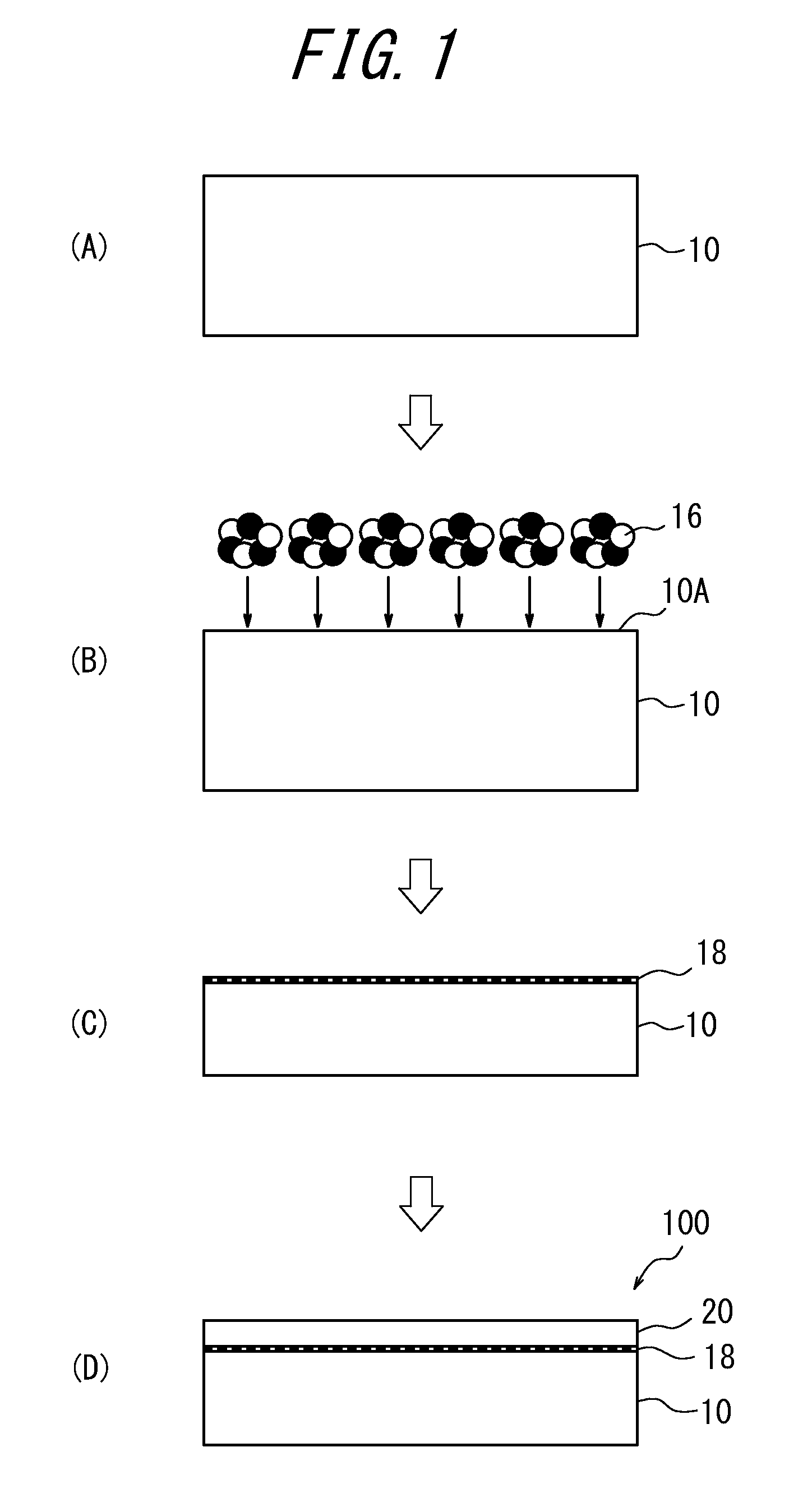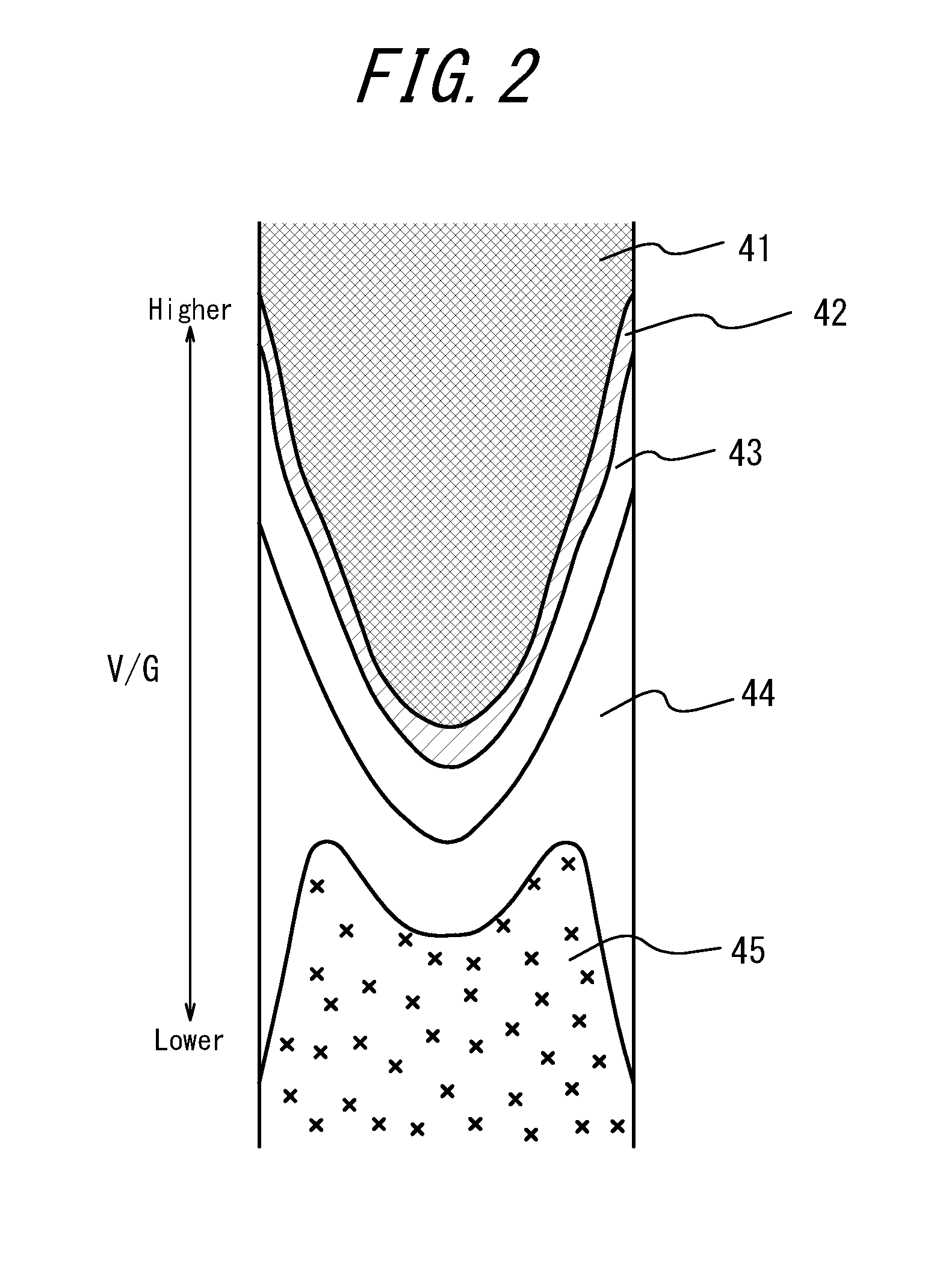Method of producing epitaxial silicon wafer, epitaxial silicon wafer, and method of producing solid-state image sensing device
a solid-state image and silicon wafer technology, applied in the direction of electrical equipment, semiconductor devices, radio frequency controlled devices, etc., can solve the problems of deterioration of semiconductor devices characteristics, increased dark, and formation of defects referred to as white spot defects, so as to suppress metal contamination, reduce the effect of deterioration and improvement of the quality of the semiconductor devi
- Summary
- Abstract
- Description
- Claims
- Application Information
AI Technical Summary
Benefits of technology
Problems solved by technology
Method used
Image
Examples
examples
[0082]First, single crystal silicon ingots were grown with varied residence time in a temperature range of 1200° C. to 1000° C. (COP formation temperature range). Specifically, single crystal silicon ingots (a) to (d) having four levels of COP formation regions, in which the residence time of the ingots in the COP formation temperature range varies, were grown using three levels of single crystal pulling apparatuses having different hot zone structures at a pulling speed adjusted such that the single crystal silicon ingots to be grown dwell in the temperature range of 1200° C. to 1000° C. for (a) 50 min, (b) 80 min, (c) 150 min, and (d) 160 min.
[0083]Single crystal pulling apparatuses used for growing the above four levels of single crystal silicon ingots (a) to (d) are shown in FIGS. 5A and 5B. A single crystal pulling apparatus 200 shown in FIG. 5A includes, in a chamber 51, a crucible 52 composed of a quartz crucible 52a and a graphite crucible 52b for receiving polycrystalline s...
invention examples 1 to 4
[0093]Subsequently, C5H5 clusters were generated as cluster ions using a cluster ion generator (CLARIS produced by Nissin Ion Equipment Co., Ltd.), and the silicon wafers (a) to (d) fabricated as described above were with the cluster ions under the conditions of dose: 1.00×1014 Clusters / cm2 (carbon dose: 5.00×1014 atoms / cm2), and acceleration voltage per one carbon atom: 14.8 keV / atom. After that, each silicon wafers was transferred into a single wafer processing epitaxial growth apparatus (produced by Applied Materials, Inc.) and subjected to hydrogen baking at 1120° C. for 30 s in the apparatus. A silicon epitaxial layer (thickness: 10 μm, kind of dopant: phosphorus, dopant concentration: 1×1015 atoms / cm3) was then epitaxially grown on the silicon wafer by CVD at 1150° C. using hydrogen as a carrier gas and trichlorosilane as a source gas, thereby obtaining an epitaxial silicon wafer of the present invention. Note that in Invention Examples 1 to 4, irradiation with cluster ions wa...
PUM
 Login to view more
Login to view more Abstract
Description
Claims
Application Information
 Login to view more
Login to view more - R&D Engineer
- R&D Manager
- IP Professional
- Industry Leading Data Capabilities
- Powerful AI technology
- Patent DNA Extraction
Browse by: Latest US Patents, China's latest patents, Technical Efficacy Thesaurus, Application Domain, Technology Topic.
© 2024 PatSnap. All rights reserved.Legal|Privacy policy|Modern Slavery Act Transparency Statement|Sitemap



